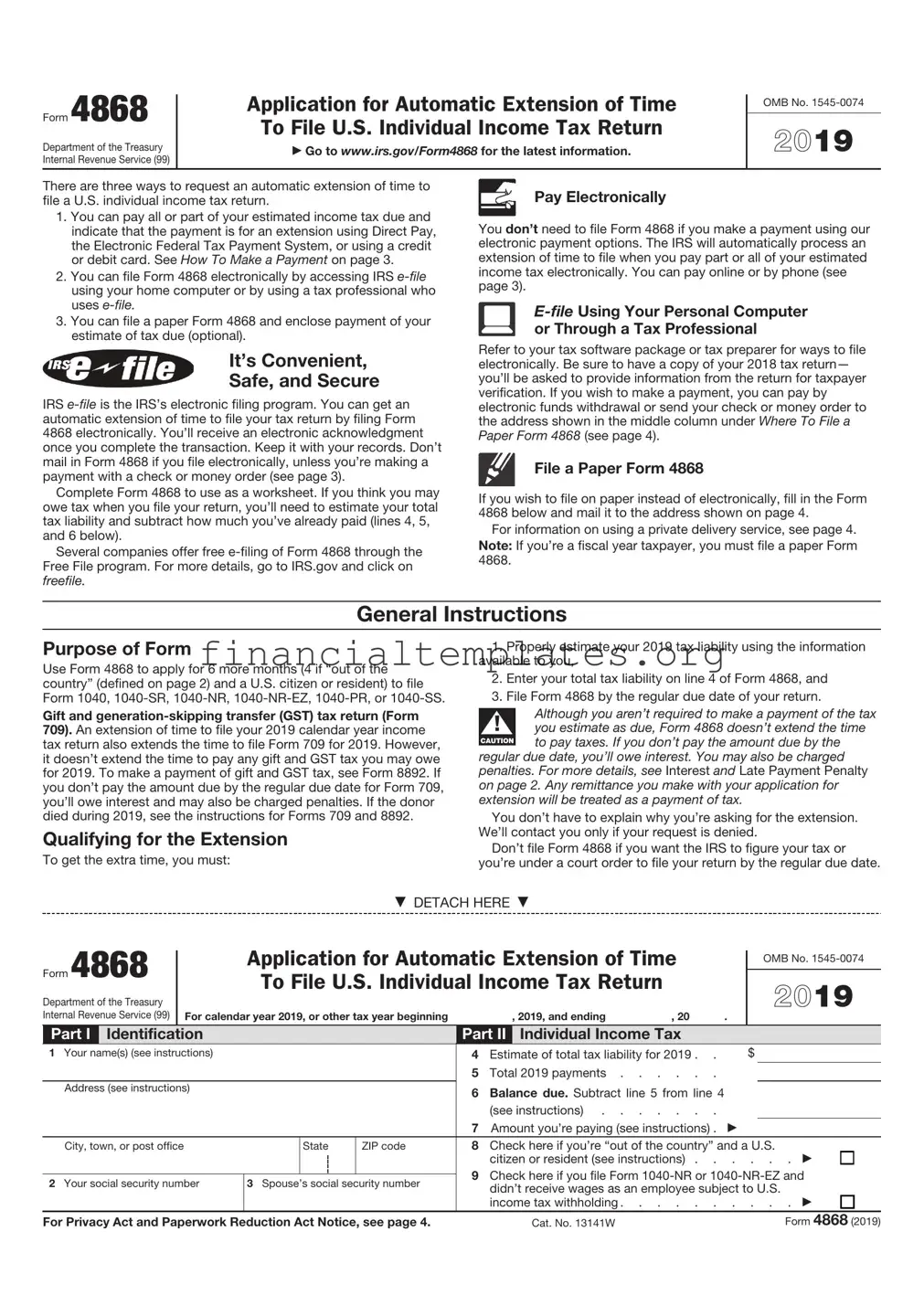Form 4868 (2021) |
|
Page 4 |
Where To File a Paper Form 4868 |
|
|
|
And you’re not making a payment, |
|
And you’re making a payment, |
send Form 4868 to |
If you live in: |
send Form 4868 with your payment to |
Department of the Treasury, |
Internal Revenue Service: |
Internal Revenue Service Center: |
|
|
|
Florida, Louisiana, Mississippi, Texas |
P.O. Box 1302, Charlotte, NC 28201-1302 |
Austin, TX 73301-0045 |
|
|
|
Arizona, New Mexico |
P.O. Box 802503, Cincinnati, OH 45280-2503 |
Austin, TX 73301-0045 |
|
|
|
Arkansas, Connecticut, Delaware, District of Columbia, Illinois, |
|
|
Indiana, Iowa, Kentucky, Maine, Maryland, Massachusetts, |
P.O. Box 931300, Louisville, KY 40293-1300 |
Kansas City, MO 64999-0045 |
Minnesota, Missouri, New Hampshire, New Jersey, New York, |
Oklahoma, Rhode Island, Vermont, Virginia, West Virginia, |
|
|
Wisconsin |
|
|
|
|
|
Pennsylvania |
P.O. Box 802503, Cincinnati, OH 45280-2503 |
Kansas City, MO 64999-0045 |
|
|
|
Alaska, California, Colorado, Hawaii, Idaho, Kansas, Michigan, |
P.O. Box 802503, Cincinnati, OH 45280-2503 |
Ogden, UT 84201-0045 |
Montana, Nebraska, Nevada, North Dakota, Ohio, Oregon, |
South Dakota, Utah, Washington, Wyoming |
|
|
|
|
|
Alabama, Georgia, North Carolina, South Carolina, Tennessee |
P.O. Box 1302, Charlotte, NC 28201-1302 |
Kansas City, MO 64999-0045 |
|
|
|
A foreign country, American Samoa, or Puerto Rico, or are |
|
|
excluding income under Internal Revenue Code section 933, |
|
|
or use an APO or FPO address, or file Form 2555 or 4563, |
P.O. Box 1303, Charlotte, NC 28201-1303 |
Austin, TX 73301-0215 |
or are a dual-status alien, or are a nonpermanent resident of |
|
|
Guam or the U.S. Virgin Islands |
|
|
|
|
|
All foreign estate and trust Form 1040-NR filers |
P.O. Box 1303, Charlotte, NC 28201-1303 USA |
Kansas City, MO 64999-0045 USA |
|
|
|
All other Form 1040-NR, 1040-PR, and 1040-SS filers |
P.O. Box 1302, Charlotte, NC 28201-1302 USA |
Austin, TX 73301-0045 USA |
|
|
|


